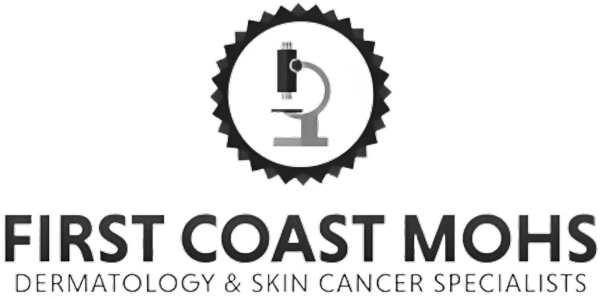Top Challenges in Local SEO for Multi-Location Businesses (And How to Solve Them)
Did you know that 46% of all Google searches are for local information? If your business isn’t optimized for local SEO, you’re missing out on nearly half of potential customers. In today’s digital age, local SEO for multi-location businesses is not just beneficial—it’s essential. For businesses operating across multiple locations, local SEO ensures that each branch is visible to potential customers nearby. This visibility directly impacts customer engagement, as it allows businesses to connect with their community and drive foot traffic to physical stores.
Effective local SEO can make or break a business’s ability to reach its audience. By optimizing for local search, businesses can improve their search rankings, which translates to enhanced credibility and trust among consumers.
However, mastering local SEO comes with its own set of challenges. From maintaining consistent NAP information to managing location-specific content, businesses must navigate these hurdles to succeed. In this article, we’ll explore these challenges in detail and provide actionable solutions to overcome them.
1. Inconsistent NAP Information
A. Understanding NAP
The term NAP stands for Name, Address, and Phone number. It’s a critical element of local search engine optimization, as it helps search engines verify the legitimacy and location of a business. Consistent NAP information not only boosts your visibility in location-based searches but also ensures that potential customers can find and contact your business easily.
B. Why Consistency Matters
Impact on Rankings and Trust
Inconsistent NAP details can severely impact your search rankings and reduce organic traffic. Search engines rely on accurate information to provide relevant results, and discrepancies in your NAP can make your business less trustworthy to their algorithms. Lower visibility translates to fewer clicks and missed opportunities.
Erosion of Trust
Customers depend on accurate information. If they find conflicting details about your business address or phone number across online platforms, they may question your credibility. This lack of trust can drive them to competitors with consistent citations.
C. Strategies for Consistency
Conduct a Comprehensive Audit
Start by auditing your current business listings. Use citation tracking tools like Moz Local or Yext to identify discrepancies in your NAP. Don’t overlook online directories or your website’s contact page.
Bulk Verification for Multi-Location Businesses
If your business operates across multiple locations, take advantage of bulk verification on platforms like Google Business Profile. This ensures that updates to your business address or contact details are applied consistently across all locations.
Synchronize Across Online Platforms
Ensure that updates to your NAP are reflected across your website, social media, and local directories. Regular monitoring and maintenance of these listings can help you catch and correct inconsistencies before they impact your rankings.
Optimizing your NAP for location-based searches can drive more targeted traffic to your site. Accurate details improve your chances of appearing in relevant searches, connecting you with customers ready to take action. How consistent is your business information online?
2. Managing Duplicate Listings
Duplicate listings are more common than you might think, with studies showing that over 40% of businesses have duplicate listings online. These duplicate content can confuse search engines, which struggle to determine which listing is accurate. This confusion can lead to lower search rankings and frustrate potential customers who encounter conflicting information.
To effectively manage duplicate listings, follow these steps:
- Audit your business locations on various platforms like Google My Business, Yelp, and local directories.
- Use tools such as Moz Local or BrightLocal to scan and identify duplicate listings across the web.
- Once identified, contact or update the platform to merge or remove duplicates, ensuring consistent and accurate information remains.
Leveraging tools like Yext or Whitespark can streamline the process of managing your listings. These tools offer solutions to maintain consistency and keep your listings up to date. By proactively managing duplicate listings, businesses can improve their local search performance and enhance user trust.
3. Managing Location-Specific Content
A. The Importance of Unique Content
Creating unique content for each location is crucial in differentiating your business in various markets. Custom blog posts and targeted messaging enhance local relevance, boost engagement, and improve search rankings. Customers are more likely to connect with businesses that speak directly to their community’s specific needs and interests.
B. Challenges in Content Creation
Developing diverse and relevant content for multiple locations can be daunting. Common hurdles include resource allocation, maintaining brand consistency, and generating fresh ideas that resonate locally. Striking the right balance between local flavor and brand voice can be time-consuming, but it’s essential for success in multiple-location SEO.
C. Tips for Engaging Content
To overcome these challenges and improve visibility in search results, consider the following strategies:
- Conduct Keyword Research. Use keyword research tools to identify popular keywords and keyword opportunities specific to each location. Focus on search terms and search intents that align with local customer behavior and search volume.
- Leverage Local Insights. Conduct location-specific research to understand local preferences and trends. Incorporate relevant keywords into readable content that addresses local interests and needs.
- Feature Local Events and Testimonials. Highlight local events, partnerships, and customer testimonials in your content. This not only enhances online visibility but also strengthens your connection with the community.
- Encourage Local Contributions. Work with local teams to gather insights and ideas for content creation. Their input ensures authenticity and helps address search queries specific to their market.
- Optimize for Search Traffic. Use a strong marketing strategy to align your content with relevant search intents. Incorporate conversion rates and engagement metrics into your approach to ensure that your efforts translate into measurable results.
4. Managing Online Reviews and Reputation
Online reviews significantly influence local SEO performance. They impact search engine rankings and establish customer trust. A BrightLocal survey found that 87% of consumers read online reviews for local businesses. This highlights their role in shaping visibility and building a positive reputation.
For multi-location businesses, reputation management becomes even more critical. The volume of reviews can be overwhelming, and ensuring a consistent response strategy is essential to maintain brand integrity. Negative reviews not only affect individual locations but can also tarnish your brand’s overall perception.
Best Practices for Effective Reputation Management
To effectively manage online reviews, consider these best practices:
a. Monitor Reviews in Real-Time
Set up alerts for review sites to track feedback as it happens. This helps you respond quickly and appropriately, showing customers you value their input.
b. Standardize Your Responses
Develop a consistent response template to ensure professionalism across all locations. Personalized responses to specific feedback can also enhance the customer’s positive experience.
c. Encourage Positive Reviews
Satisfied customers are your best advocates. Promptly request reviews from those who’ve had a positive experience with your business to build a strong online reputation.
d. Address Bad Reviews Professionally
Negative feedback is an opportunity to improve. Respond promptly, apologize where necessary, and outline steps to resolve the issue. This not only repairs customer relationships but demonstrates accountability to others reading the review.
e. Showcase Positive Feedback
Highlight glowing reviews on your website and social media platforms. This not only enhances trust but also reinforces a positive reputation among potential customers.
Consistent and thoughtful engagement with reviews can enhance your business’s reputation and boost multi-location SEO efforts. How well is your business handling its online reviews?
5. Optimizing Google Business Profile Listings
Google Business Profile (GBP), formerly Google My Business (GMB), is essential for local SEO, especially for multi-location businesses. It can significantly boost your digital presence and improve local search rankings. A Moz study found that GBP signals make up 25% of the factors influencing local search rankings. However, businesses often overlook key details, like incomplete profiles or outdated information, which can hurt their visibility.
Whether you’re managing a single location or a multi-location brand, an optimized GBP profile helps you stand out. Here’s how to make sure your profile is working for you:
A. Complete Business Details
Ensure that all your business details are complete and accurate. This includes the exact address, phone number, and geographic location for each physical location or franchise location. For businesses with multiple locations, it’s crucial that the information for each additional location is clear and consistent.
B. Update Hours of Operation Regularly
Keep your hours of operation up to date, including any holiday hours or special hours of operation for specific events. Customers appreciate knowing when to expect your business to be open, and outdated information can lead to missed opportunities.
C. Use High-Quality Images
Show off your locations with high-quality images that reflect your services and atmosphere. Adding photos of your physical location or happy customers will help your business stand out on Google Maps and other platforms like Apple Maps.
D. Respond to Reviews
Customer reviews are a vital part of your GBP. Make sure to respond to both positive and negative sentiments in reviews. A review response shows that you care about customer feedback. Responding promptly can also improve your marketing efforts and build customer trust. Address complaints professionally and turn any negative sentiment into an opportunity for growth.
E. Keep Your Business Categories Updated
Accurate business categories help customers find your business more easily. Make sure you are listed under the most relevant categories, reflecting what your business offers. This can improve your search visibility and help you connect with your ideal audience.
F. Regularly Post Special Offers or Updates
Keep your audience engaged by posting regular updates and special offers. Whether it’s a limited-time discount or an announcement about your new services, these posts keep your customers informed and interested in what you offer.
G. Optimize for Multiple Platforms
Google isn’t the only platform where your business details should appear. Ensure that your information is consistent across Google Maps, Apple Maps, and other directories. Inconsistent details can confuse potential customers and harm your digital presence.
By following these best practices, you’ll maximize your GBP’s potential to drive more phone calls, traffic, and customer engagement for your business. For multi-location brands, maintaining a consistent, updated profile across all locations ensures your business remains competitive in local search rankings.
In today’s world, visibility is everything. Is your business easily found?
6. Targeting Local Keywords Effectively
If you’re not ranking for the keywords your customers are searching for, are you really reaching them? For local SEO for multi-location businesses, location-specific keywords are paramount. Research shows that 46% of all Google searches seek local information, underscoring the need for precise keyword targeting to connect with potential customers. A well-crafted local SEO strategy can boost your visibility and drive foot traffic to each location.
A. Challenges in Keyword Research and Targeting
Identifying the right local keywords isn’t always straightforward. Each location may have its own unique search trends, which requires a custom approach. One common SEO mistake businesses make is keyword stuffing—overloading content with keywords in an attempt to rank higher. This can actually hurt your rankings by making your content look unnatural to both users and search engines.
Another challenge businesses face is balancing broad and location-specific keywords. Focusing only on broad keywords may result in missed opportunities, while overly specific keywords may not reach enough people. Finding the right balance is key to achieving better keyword rankings.
B. Tips for Successful Local Keyword Integration
To overcome these challenges, start with thorough keyword research using tools like Google Keyword Planner or SEMrush. Look for target keywords that are both relevant to your business and commonly searched by customers in each geographic area. Incorporate neighborhood names, landmarks, and other local references into your content to make it more appealing to local searches.
Don’t forget to maintain consistency in how you use keywords across all digital platforms, including your website, Google Business Profile, and social media. This consistency helps reinforce your local presence and improves your chances of ranking higher in local searches.
It’s also important to avoid the temptation of keyword stuffing. Use keywords naturally within your content and focus on providing valuable, relevant information. Search engines favor content that offers value to users, and your audience will appreciate it, too.
C. Multi-Location SEO Strategy
For businesses with multiple locations, your SEO strategy should cater to each specific location while maintaining a unified approach. A multi-location SEO strategy should focus on creating dedicated pages for each location, optimizing them with location-specific keywords, and ensuring that your business details are correct for each area.
By targeting the right local keywords and customizing your strategy to each location, you can enhance your search engine visibility and attract the right customers to each of your business locations.
7. Technical SEO for Multi-Location Sites
Technical SEO is crucial for optimizing multi-location websites. It ensures that each location is properly represented and gains the visibility it deserves in local search results. By focusing on elements like site structure, schema markup, and mobile optimization, businesses can improve their search rankings and user experience.
A. Common Challenges
Multi-location businesses often struggle with technical SEO due to structural issues on their websites. For example, sites without a clear hierarchy can confuse search engines, making it harder to index location-specific pages. Without proper schema markup or a consistent URL structure, businesses risk missing valuable opportunities in local search results.
Additionally, inconsistent internal links or poorly structured URLs can impact click-through rates and reduce the effectiveness of link-building efforts. User behavior may also be negatively affected if visitors can’t easily navigate or find location-specific content.
B. Solutions to Improve Technical SEO
Design a Clear Site Hierarchy
For multi-location websites, having a clear structure is vital. Create dedicated pages for each location with consistent navigation paths. This makes it easier for search engines to understand the site’s structure and properly index each location page. Use internal links to guide users and search engines through the site, improving the overall user experience.
Implement Local Schema Markup
Schema.org offers structured data that helps search engines understand key location-specific details, like addresses and business hours. Implementing local schema markup increases the chances of appearing in rich results, which boosts visibility in local searches.
Ensure Mobile-Friendliness
More customers search on mobile devices than ever before. Optimize your site for mobile to cater to on-the-go searches. Responsive design and fast loading times improve user behavior metrics, leading to higher engagement and conversion rates.
Regular SEO Audits
Regular SEO audits can help identify issues with your site’s structure, internal links, and schema markup. By using SEO tools and conducting a competitive analysis, you can gain valuable insights into how your site is performing and where it can improve. This includes checking for broken links, duplicate content, and ensuring that all pages are indexed correctly.
Focus on Building Links
Building quality backlinks through guest posts and link building strategies strengthens your site’s authority and helps boost search rankings. Ensure that internal links are strategically placed to improve navigation and support your SEO goals.
By addressing these technical challenges, businesses can enhance their online presence, ensuring each location is accurately represented in search results.
How easy is it for your customers to find your business online? Let’s make it simple for them. Contact C7 Creative today to optimize your site’s technical SEO and drive more traffic to every location.
Final Words
In navigating the complexities of local SEO for multi-location businesses, we identified key challenges such as inconsistent NAP information, duplicate listings, and managing diverse content. These hurdles can seem daunting, but solutions like maintaining consistent data, using specialized tools, and crafting unique content can significantly enhance your visibility.
However, the intricacies of local SEO demand expert guidance to truly excel. This is where C7 Creative steps in, offering personalized strategies and solutions to ensure your business stands out in every location.
The future of local SEO is ever-evolving—how will you stay ahead? Contact C7 Creative Jacksonville today and harness the power of expert SEO services to transform your multi-location business.
Calvin Bryant
Calvin is a digital expert with clients in the U.S., U.K., and the Caribbean Islands. As the founder of C7, he has worked with Joel Osteen, Carlos Santana, the FBI, and the NBA. He resides in Ponte Vedra, Florida, and is a proud father and husband of 28+ years to his wife, Krista.








